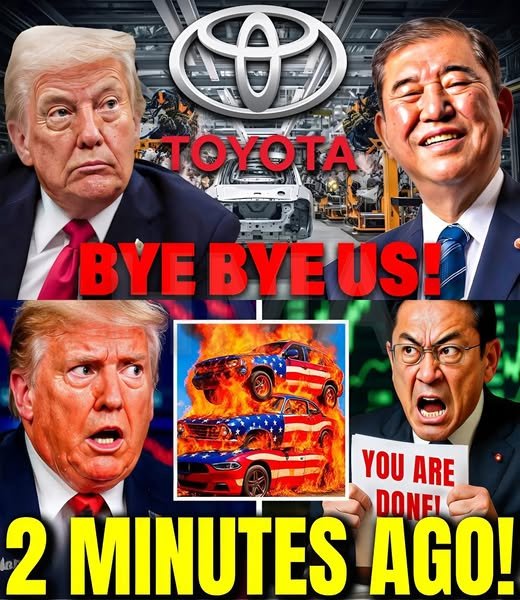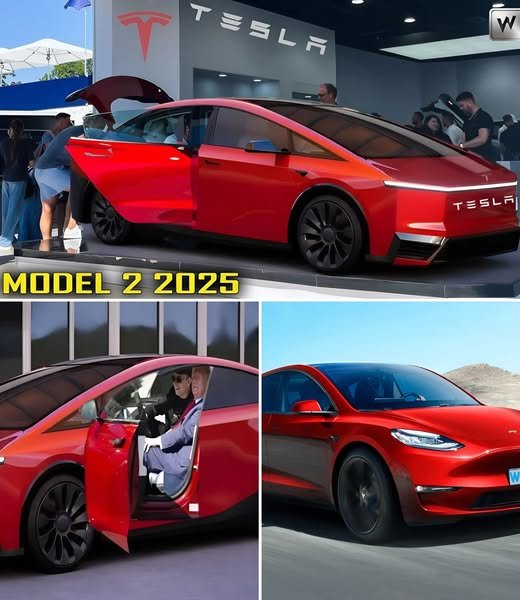On April 27, 2025, Japan has launched a bold counterstrike against the United States in response to President Donald Trump’s aggressive tariff policies, igniting a trade war that could devastate the U.S.
auto industry. This dramatic escalation comes after months of mounting tensions, with Japan now taking decisive action to protect its economic interests, particularly its vital automotive sector. Here’s a deep dive into the unfolding crisis, its potential impact on the U.S. auto industry, and what this means for global trade.
The Spark: Trump’s Tariffs on Japan
The conflict began when Trump imposed a 25% tariff on all foreign-made cars and car parts, effective April 3, 2025, under Section 232 of the Trade Expansion Act of 1962. This move, aimed at bolstering America’s domestic auto industry, hit Japan hard, as the U.S. is the largest market for Japanese automakers like Toyota, Honda, and Nissan. The tariffs were later adjusted to a 10% levy on Japan during ongoing trade negotiations, but the auto-specific tariffs remained in place, costing Japan’s five biggest automakers an estimated $25 billion annually, with Toyota bearing roughly half of that burden.
Japan’s Prime Minister Shigeru Ishiba called the tariffs a “national crisis,” highlighting the auto industry’s 3% contribution to Japan’s GDP. The Nikkei 225 index plummeted 7.8% on April 7, marking its third-largest single-day loss in history, as the tariffs threatened to slash Japan’s GDP growth by 0.8%. Japanese officials, including Ishiba, expressed disappointment over the lack of exemptions, with Trade Minister Yoji Muto setting up a task force to analyze the fallout. Despite negotiations, Trump has remained firm, with U.S. officials like Treasury Secretary Scott Bessent advising against retaliation to avoid further escalation.
Japan’s Counterstrike: A Strategic Blow to the U.S. Auto Industry
In a stunning move, Japan has retaliated by shifting its automotive manufacturing strategy, a decision that could cripple the U.S. auto industry. On April 25, 2025, reports emerged that a major Japanese car giant—widely believed to be Toyota—has begun relocating its U.S.-based manufacturing plants out of the country. This follows earlier indications from Nissan, which considered moving production to the U.S. but has since halted new orders for some models due to the tariffs. The relocation is expected to result in the loss of approximately 40,000 U.S. jobs, a significant blow to communities dependent on these factories.
Japan’s strategy doesn’t stop there. The country is leveraging its technological edge by accelerating investments in electric vehicle (EV) and autonomous driving technologies, areas where U.S. automakers like Ford and GM have struggled to keep pace. Japanese automakers are also redirecting exports to other markets, such as the European Union and India, where demand for their vehicles remains strong. This shift could flood these markets with high-quality, competitively priced Japanese cars, potentially squeezing out American exports and further weakening the U.S. auto industry’s global position.
The Fallout: A Potential Death Knell for U.S. Automakers
The U.S. auto industry, already grappling with supply chain disruptions and rising costs, faces an existential threat from Japan’s counterstrike. The relocation of Japanese manufacturing plants will not only lead to massive job losses but also disrupt the supply of critical components like engines and transmissions, which American automakers rely on. With 50% of the 16 million vehicles sold in the U.S. in 2024 being imports, and only 25% of vehicle content classified as “Made in America,” the domestic industry is ill-equipped to fill the gap left by Japanese manufacturers.
The tariffs have already driven up car prices for American consumers, with a $30,000 car now costing $37,500, adding $175 to monthly payments for middle-class buyers. This price hike, combined with reduced competition from Japanese automakers, could lead to a sharp decline in sales, further straining U.S. manufacturers. Analysts warn of a ripple effect across the supply chain, impacting industries like steel and semiconductors, and potentially triggering a broader economic downturn. JP Morgan has raised its global recession probability to 60%, citing the tariffs as a key factor.
Global Reactions and the Risk of a Wider Trade War
The Japan-U.S. trade conflict has sent shockwaves through the global economy, with other nations bracing for the fallout. China, facing a 145% tariff on its imports, has retaliated with a 125% tariff on U.S. goods and restricted rare earth exports, critical for high-tech industries. The European Union, hit with a 20% tariff, is considering retaliatory measures targeting $26 billion in U.S. imports, while Canada and Mexico, despite USMCA exemptions, face ongoing pressure over auto tariffs. The International Monetary Fund has warned that these tariffs could “represent a significant risk to the global outlook,” especially amidst sluggish growth.
Posts on X reflect growing discontent among Americans, with users like @RichardLBailey and @TS2784 highlighting the job losses and questioning Trump’s “winning” narrative. Japanese lawmakers, such as Shinji Oguma, have compared Trump’s tariffs to “extortion,” urging resistance to U.S. demands. Meanwhile, Trump remains defiant, calling the tariffs an “economic revolution” and claiming they will bring manufacturing back to America, though experts argue the short-term pain may outweigh any long-term gains.
What’s Next: A Critical Juncture for Global Trade
The Japan-U.S. trade war is at a critical juncture, with both sides digging in. Japan’s counterstrike signals a willingness to play hardball, leveraging its economic strengths to protect its interests. For the U.S., the tariffs may bolster domestic manufacturing in the long run, but the immediate impact on jobs, prices, and global competitiveness could be devastating. As negotiations continue, the world watches to see if cooler heads will prevail or if this conflict will escalate into a full-blown global trade war, with far-reaching consequences for economies and consumers alike.



